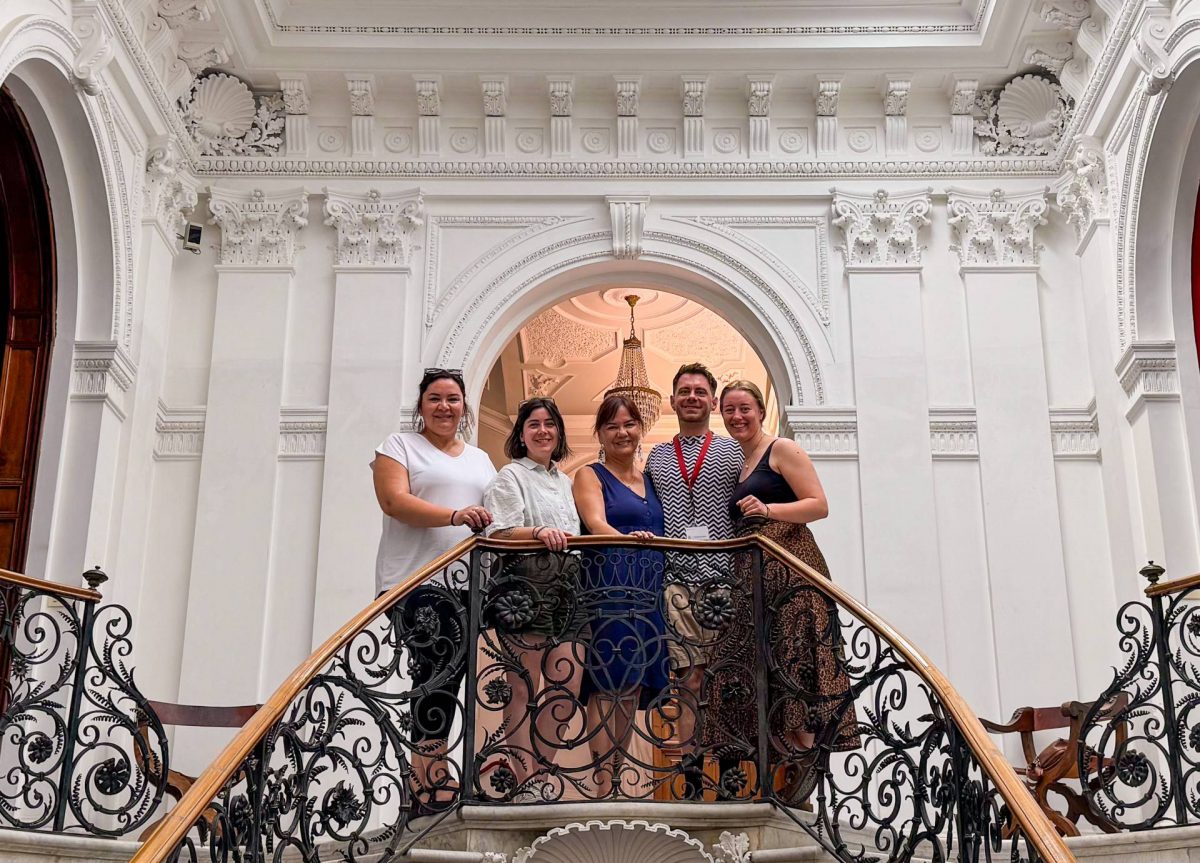
(Left to right) Amanda McLeod, Hanna Ferris, Dr. Suzanne McLeod, Braden Scott, and Abby Friesen.
Early Distortion: Pinturicchio and the Genesis of a Constructed Image – Dr. Suzanne McLeod and Students Present in Rome
On Tuesday, June 18, 2024, Dr. Suzanne McLeod and her student research team—Hanna Ferris, Abby Friesen, and Amanda McLeod—presented an intriguing work-in-progress session at the Bibliotheca Hertziana—Max-Planck-Institut für Kunstgeschichte in Rome. This presentation was part of Dr. McLeod’s SSHRC grant project and highlighted the contributions of her two research assistants (RAs), Hanna Ferris and Abby Friesen, along with Amanda McLeod, an Indigenous conservator. Julia Leach, MA student, and Braden Scott, Assistant Professor of Early Modern Art & Architecture, also attended and joined the trip to support the team’s efforts.
Unveiling a Hidden Image
In 2006, a team of restorers undertook the meticulous cleaning of Pinturicchio’s 1494 Resurrection fresco, located in the Sala dei Misteri in the Borgia Apartments of the Apostolic Palace. During this restoration, they uncovered a small yet significant depiction in the background of the resurrection scene: Indigenous men dancing nude and adorned with feathered headdresses. This discovery sparked widespread interest and debate within the art community.
Historical Context and Significance
In 2015, the Director of the Vatican Museums issued a statement suggesting that this image might be the earliest European depiction of Indigenous people, likely inspired by the descriptions Columbus provided following his 1492 explorations. This revelation sent shockwaves through Europe and prompted the Vatican to act swiftly.
The result was the issuance of the first in a series of Papal Bulls concerning the New World, known as Inter caetera or the “Doctrine of Discovery,” on May 4, 1493. These bulls delineated the boundaries of territorial claims between Spain and Portugal and laid the groundwork for the interactions between Europeans and Native Americans. Pinturicchio’s fresco, therefore, gained immense significance as it marked an early moment in the visual representation and subsequent distortion of Indigenous people in European art.
Impact on Art and Perceptions
The presence of the “Indian” in Pinturicchio’s fresco had far-reaching implications. It established a visual reference that influenced the portrayal of Native Americans throughout the Renaissance and beyond. The research team, led by Dr. McLeod, aims to explore how this image contributed to the stereotyping and misrepresentation of Indigenous people, shaping perceptions that persist to this day.
A New Cross-Disciplinary Narrative
Dr. McLeod and her team are not only interested in the historical and artistic significance of this discovery but also in its relevance to contemporary discussions on reconciliation. By tracing the distribution and evolution of this image throughout the sixteenth century, they hope to fill gaps in the art historical record and offer a new, cross-disciplinary narrative. Crucially, this narrative will be framed from the perspective of First Nations people, ensuring that their voices and experiences are central to the story.
Moving Forward
The presentation at the Bibliotheca Hertziana marks a significant step in this ongoing research project. As Dr. McLeod and her team continue to uncover and analyze the layers of meaning within Pinturicchio’s fresco, they contribute to a deeper understanding of how art has been used to construct and perpetuate cultural narratives. Their work serves as a reminder of the power of images and the importance of revisiting and reassessing historical artifacts with a critical and inclusive lens.
By shedding light on the early distortion of Indigenous representations in European art, Dr. McLeod and her team pave the way for a more nuanced and just portrayal of Native American history and culture.






